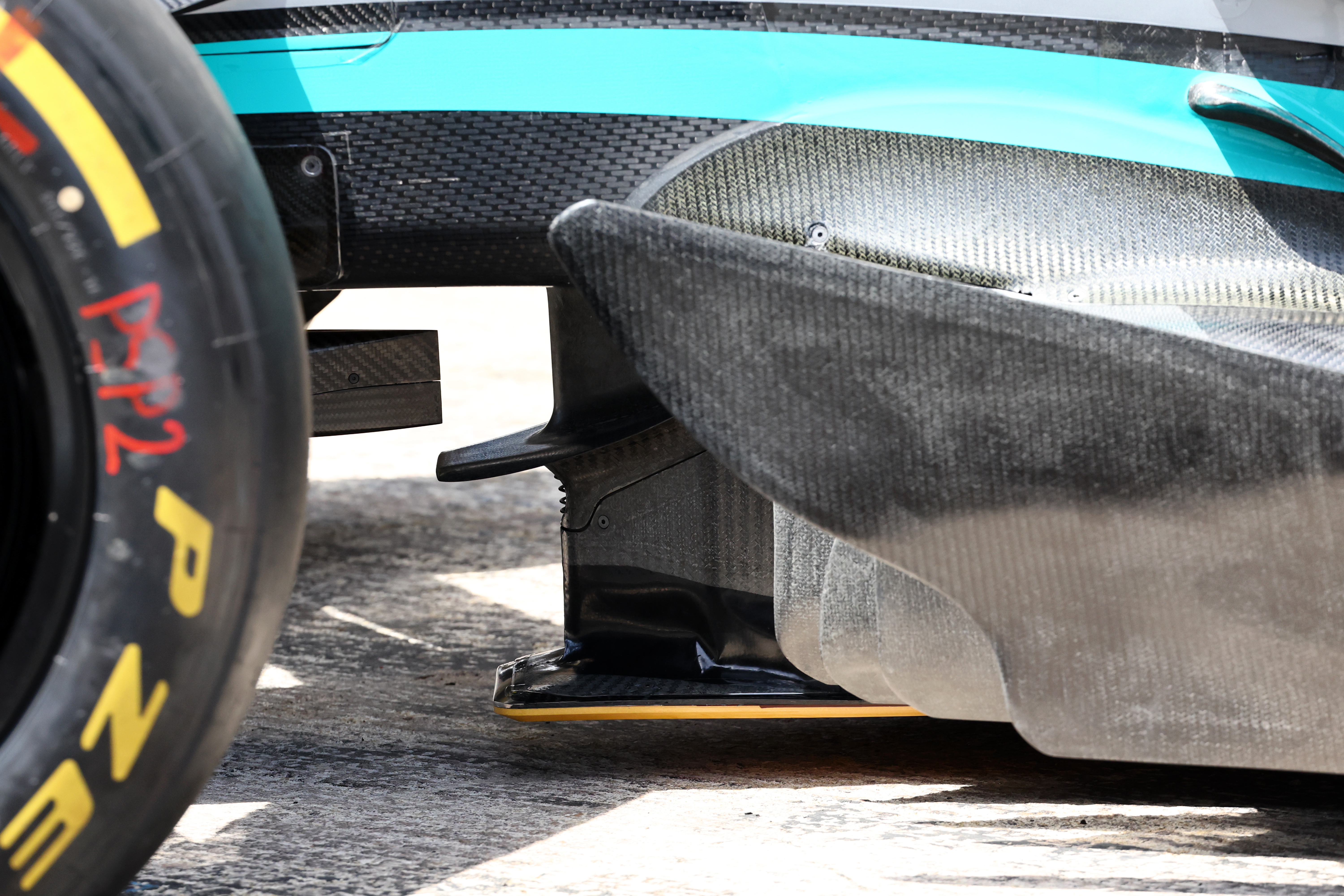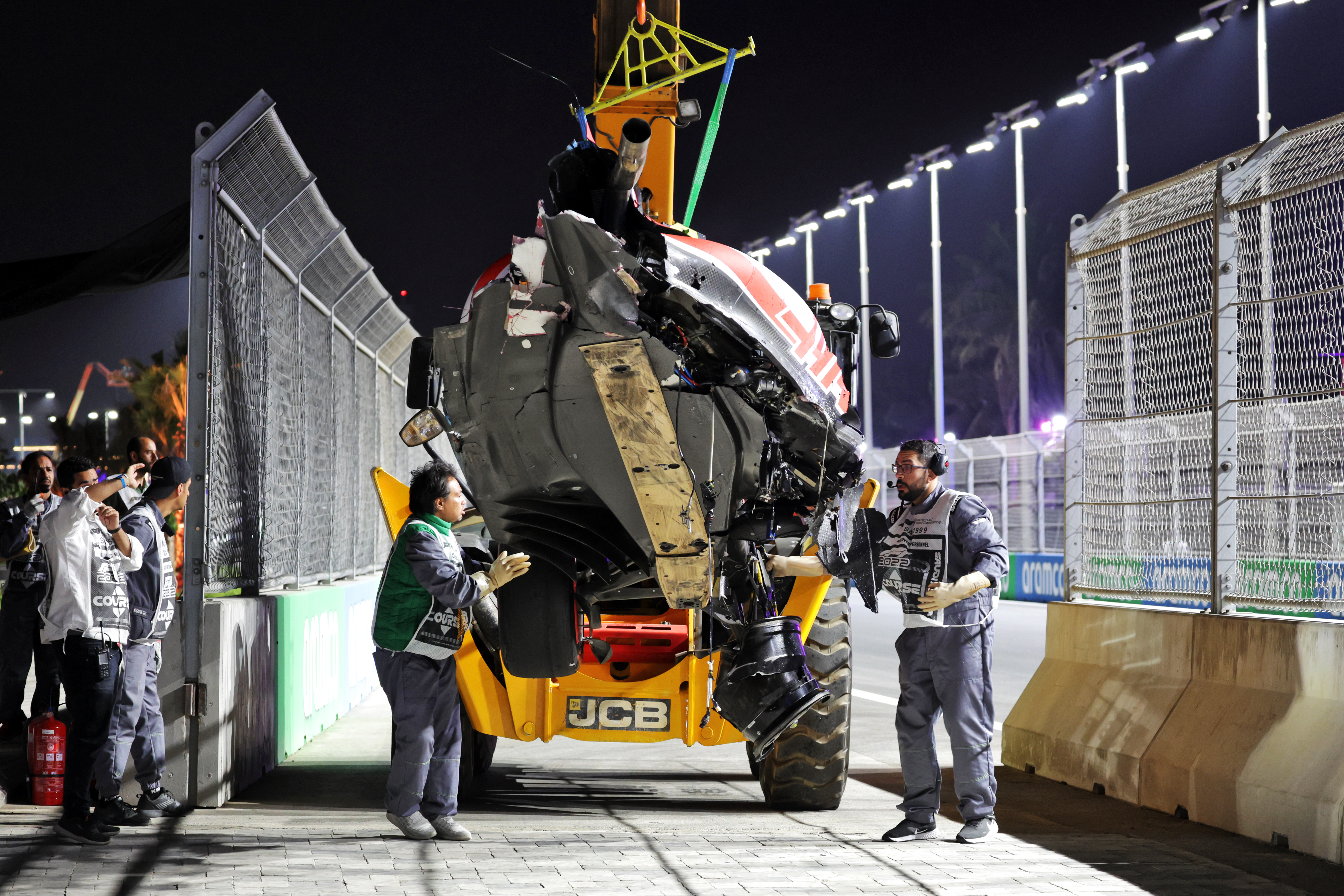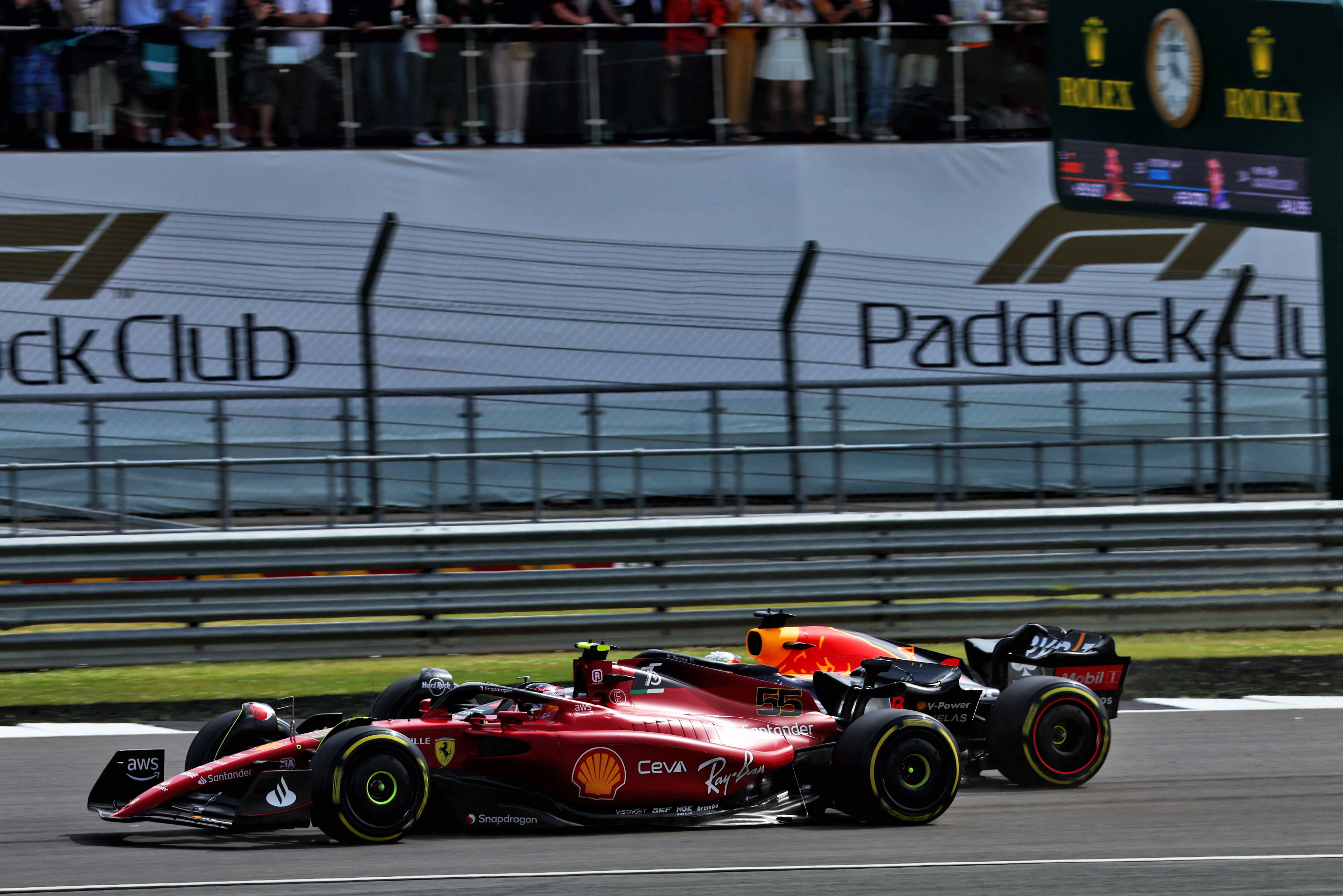Red Bull’s firm stance against the FIA’s intervention in the porpoising and grounding of Formula 1’s 2022 cars is rooted in proposed in-season changes to the technical regulations.
The FIA is intervening on safety grounds after several drivers from different teams complained about back pain and raised concerns over potential long-term consequences of driving such cars.
While this has been primarily referred to as a porpoising issue, it also relates to the new ground-effect cars being run so low and stiff they have poor ride quality. That is why the FIA refers to the matter as aerodynamic oscillations (porpoising) and grounding (cars repeatedly smashing into the track surface).
To deal with this the FIA intends to set a limit for the vertical oscillations drivers can be subjected to.
A complicated metric has been established to measure and police this but at the same time the FIA has been focusing on “central floor flexibility, skid deflection, and skid wear measurement” – as communicated to teams in a recent, updated technical directive.
The FIA says these are “inherently related to the same issue, and go hand-in-hand with the metric”, because in order for that metric to be equally relevant amongst all the cars the stiffness of the floor has to be equal as well.

And in the FIA’s analysis of each team’s planks and skid blocks in recent weeks it has discovered significant deformations over and above what the technical regulations were intended to allow.
In technical meetings between teams and the FIA last year the FIA stipulated that the plank should be solid, with a 2mm tolerance, and the way in which the plank and the skid blocks were mounted should reflect that.
But the regulations did not include the specific wording of that original guidance and the rules only specify no deflection greater than 2mm around two holes at the leading edge of the plank and 2mm at a hole positioned slightly further back.

There are no measurements taken further to the rear, around where the driver sits, and some teams are believed to have engineered the mounting of the plank and skid blocks in a way that gives a degree of cushioning.
In this case the plank is believed to be flexing more than the intended amount and therefore can be used more aggressively – which means running the car lower – without wearing away.
The FIA believes this non-uniform stiffness of the plank is being done deliberately to circumvent the intention of the technical regulations and allows significantly lower ride heights, leading to an indirect aerodynamic gain.
To combat this, several changes are planned – including specific amendments to the technical regulations.
This is something Ferrari and Red Bull, two teams said to have adopted the interpretation the FIA is unhappy with, are against as they disagree with in-season changes, especially unilateral ones from the FIA that avoid the usual governance process.
Technically an in-season rule change requires a super-majority of eight teams to vote in favour. However, the FIA can force through changes if they relate to safety issues.
Although the exact proposals have not been officially communicated, the FIA intends to apply Article 3.15.8a – which relates to “the allowable central floor flexibility, skid deflection, and to skid wear measurement” – more strictly and intends to introduce changes to the regulations to ensure the stiffness 15mm around the periphery of the holes is uniform.

The FIA’s proposal is for a specific addition to Article 3.15.8, in reference to the plank deflecting no more than 2mm at the two holes at the front of the plank and the rearmost hole, that includes: “The local stiffness around the periphery of these three holes for a radial distance of 15mm outside the periphery must be uniform, with a variance not exceeding +/- 10%.”
The overall skid area of the plank would be extended to ensure additional skids are placed around the three holes in question. If this is not accepted, then teams may be forced to remove skids from certain areas in order to use their area around the three holes.
This could imply some teams are spreading out their existing skid material more, to let the areas around the holes flex.
Although the issue is likely to be raised at the F1 Commission meeting on Friday ahead of the Austrian Grand Prix, and teams are able to provide feedback to the draft technical directive until July 12, the FIA has hinted at doing whatever it deems necessary to get the regulation changes through.
In FIA single-seater technical head Nikolas Tombazis’s communication to the teams he has leant heavily on the potential safety concerns associated with porpoising and grounding.
He says that cars with “excessive oscillations or high levels of grounding may be deemed to be of a ‘dangerous construction’, the term “construction” here extending to cover matters such as the aerodynamic configuration of the car, or its mechanical set-up”.
And if the FIA believes this metric is the best way to police that then it will consider any regulatory changes that reinforce that policing to be essential.
If this proves to be the case then Red Bull and Ferrari, the two chief opponents to the intervention, will not be able to lobby other teams to help them vote the changes down – they will be forced through on safety grounds.


